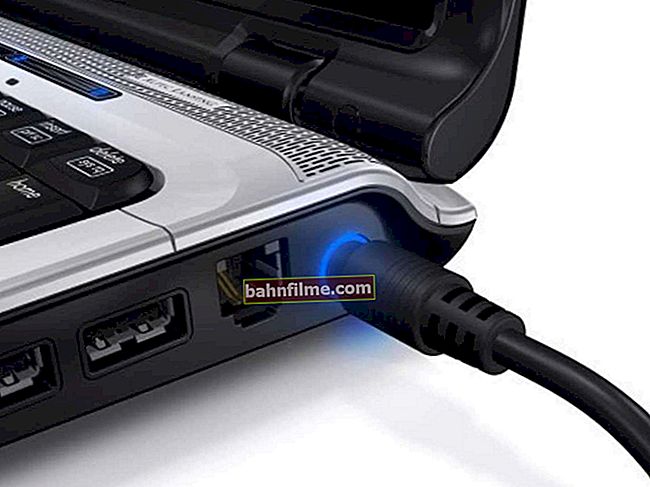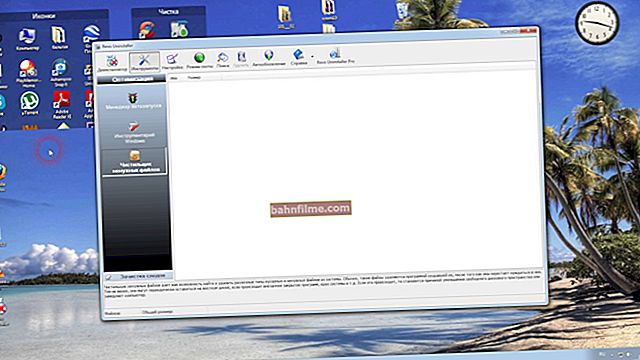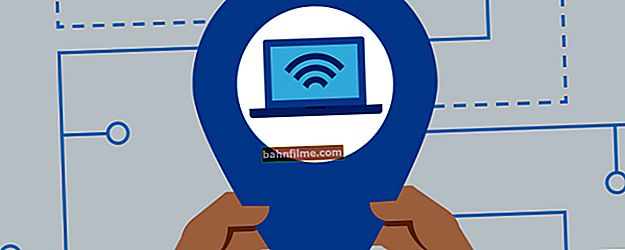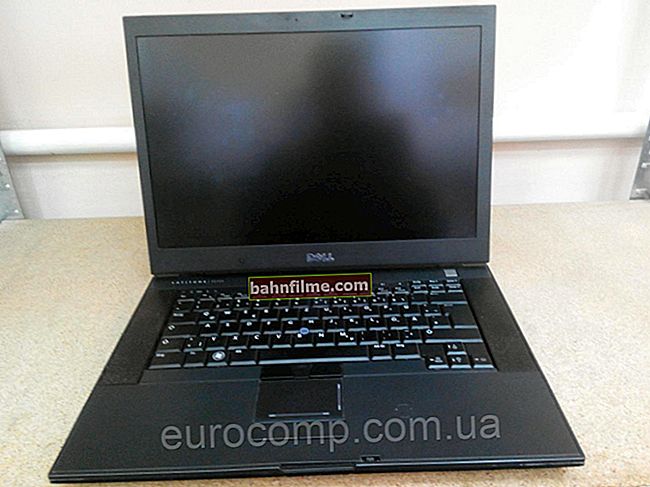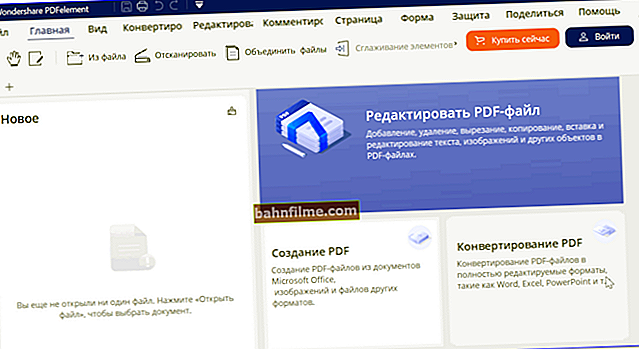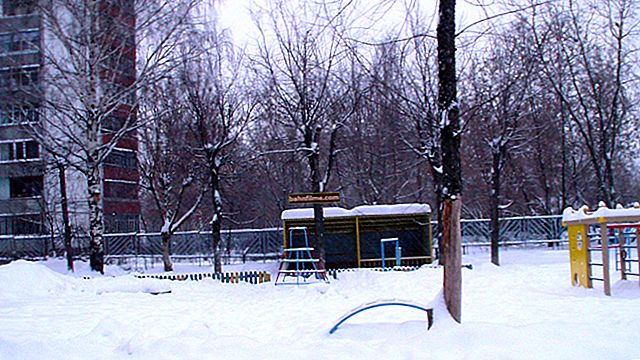
Good day!
Sooner or later, any computer (laptop) user is faced with problems caused by the malfunctioning of the hard disk. (note: usually called for short - HDD) ...
Most often, symptoms the fact that the HDD is not all right, are:
- the impossibility of loading the "old" Windows (and installing a new one);
- resetting some OS settings or programs;
- slow loading of Windows (and other programs);
- inability to open any files or programs (often an error related to the integrity of files may appear);
- very slow copying and reading of files;
- high processor load when accessing the disk and trying to open (read) any file from it;
- Windows freezes when trying to read, copy files from the disk;
- the appearance of clicks, rattling, tapping, etc. during disk operation (pay special attention to this if there were none before!);
- unreasonable computer reboots, etc.
When the symptoms listed above appear, the first thing (while everything is still working) - I recommend copying all important documents on a separate media.
Well, after that, you can start checking ...
*
👉 To help!
Diagnostics and disk check in 5 minutes. for beginners (quick test in the new Victoria 5) - 👉 see instructions.
*
Checking the hard drive
In general, any disk is quite fragile, and if handled not carefully, it can be quickly damaged. The reasons for its unstable operation (and failure), most often, are:
- unexpected power outages - when the PC is just suddenly de-energized (laptops, by the way, are protected from this). As for the PC, not every user has a UPS (unfortunately);
- compulsory power off user. Sometimes, when the computer is frozen "tightly" - other options are simply not suitable;
- strong vibration , impacts on the disk - laptops that are carried with them most often suffer. Also, the disc can be damaged during transportation;
- with unstable work power supply , bad contact on the disk (when power is - that is, then no ...);
- work not in optimal temperature modes (most often overheating);
- physical wear (with very long work);
- bad batch (with some flaws) from the manufacturer of the discs.
All these factors can be the reasons for the formation of file system errors and bad sectors (they are also called bad blocks, bad - means bad, translated from English). Consider checking for this and that in detail, and step by step ...
*
On mistakes
Checking and fixing file system errors in Windows is done with the built-in program - chkdsk ... It is available in all versions of Windows: XP, 7, 8, 10.
By the way, perhaps you even saw its work after an emergency shutdown of electricity: before loading Windows, a black screen is observed and some percentages are running there, something is being checked (example in the screenshot below 👇).

How to run the chkdsk utility
Method number 1: on this computer
First you need to open the explorer and go to "This PC" (note: used to always be called "My computer").
Next, select the disk you want to check and go to its properties ( approx. : just right click on the disk to bring up a context menu).

This Computer - Disk Properties
Then open the section "Service" and press the button "Check" (Administrator authority required).

Service - check disk
Actually, then you will see the verification process, and at the end you will see the report. An example of this is shown in the screenshot below -"Windows successfully checked the drive. No errors found.".

Windows has finished checking
*
Method number 2: through the command line
Also run the utility chkdsk can be done using the command line (although the command line must be run as administrator).
To do this, open the task manager (the combination of buttons - Ctrl + Shift + Esc), then press file / new task , write in the line "Open"CMD, and check the box "Create a task with administrator rights" (an example is shown in the screenshot below 👇).

Run Command Prompt as Administrator
Next, you need to enter the command:
- chkdsk d: - command to check the disk in read mode;
- chkdsk d: / f - checking and correcting found errors;
- chkdsk c: / f - to check the system disk, you will need to restart the computer;
- chkdsk /? - get help about the utility's capabilities.

Administrator - chkdsk drive D
*
On broken sectors (bad blocks)
What are these bad blocks?
Perhaps, starting this subsection of the article, one cannot do without a brief explanation ...
In fact, a hard drive consists of several magnetic disks over which the read head moves. When writing to a disc, the head magnetizes certain areas of the disc ( from computer science: zeros and ones ).

Hard drive (inside). Sector
This information is recorded in certain areas, called sectors ... Sometimes information cannot be read from a sector (the reasons why this happens are indicated at the beginning of the article) - such sectors are called beaten (or bad blocks ... Bad - bad (English)).
To check the disk for bad blocks, you need a special. program: it will refer to all sectors on the disk and try to read information from them.
If everything is in order with the sector, the read time is 3 milliseconds, the critical read time is 600 milliseconds (this time indicates that this block has become "unreadable" and is not worth working with).
By the way, the same specials. utilities can not only find such sectors, but also reassign them to backup (such an operation is called Remap ).
Now about how this is done ...
*
👉 To help!
The best programs for working with HDD (test, diagnostics, etc.) - see the selection
*
From under Windows
One of the best hard drive testing and diagnostics software - Victoria ... Using it, you can see the readings of the S.M.A.R.T. table. (disk self-monitoring technology, for more details on Wikipedia), assess the technical condition of the drive, replace damaged sectors with backup workers, and much more.
Another important point: "Victoria" does not show defects in file systems, software errors, etc. It evaluates the physical condition of the disk! Finding and fixing errors - see the first part of the article.
 Victoria
Victoria
Developer site: //hdd-911.com/ (different versions)
Soft-portal: //www.softportal.com/software-3824-victoria.html (Victoria 4.46b)
MyDiv: //soft.mydiv.net/win/download-Victoria.html (Victoria 4.47)
There are a lot of Victoria versions.Victoria 4.46b Freeware does not work under Windows 64bit. To run this utility on a 64-bit system, use the versionVictoria 4.47, or use the LiveCD, where this utility will be.
One more point: if your disk is more than 1.5 TB (1500 GB), you need to scan in several steps: for a 2 TB disk - two steps, for a 3 TB disk - three steps.
0-1 TB: start lba = 0, end lba = 2147483648
1-2 TB: start lba = 2147483649, end lba = 4294967296
2-3 TB: start lba = 4294967297, end lba = 6442450944
Now let's proceed directly to checking and testing the disk. After you download the archive with the program, extract the files from it and run Victoria as administrator (to do this, click on the executable file with the right mouse button)!
*
👉 I will consider the work on the example of Victoria 4.47
Important!
If you do not know what this or that option in the program means, do not touch or test it. The fact is that "Victoria", if mishandled, can easily spoil all your information on the carrier!
♦
Standard tab
The first thing we do after starting the program is to open the tab Standard (arrow-1 on the screenshot below), then select your disk to the right (arrow-2), and press the button "Passport" (arrow-3).
note that "Victoria" should see and recognize your disk - see if there is an inscription "Get passport ... Ok" (highlight-4).

If everything is OK - let's move on ...
♦
SMART Tab
On the SMART tab, click the "Get SMART" ... If everything is in order with the disk, then GOOD should light up (on a green background, as in the screenshot below)!
By the way, pay attention to the HEALTH column - it shows circles of different colors (in the example below, I have green and yellow  ).
).
So, pay attention to those points where you will have red or yellow circles: for example, in my case, "Victoria" signals that the HDA Temperature (temperature) of the hard drive was out of the optimal range (although strangely, 35 ° C - this is normal ...).

SMART status
NOTE!
If the hard disk controller is set in AHCI mode, then SMART attributes may not always be viewable. In this case, you will see an error: "Get S.M.A.R.T. command ... Error reading S.M.A.R.T!" .
The inscription "Non ATA" (in red) can also indicate this. In this case, you need to enter the BIOS and in the tab Config / Serial ATA (SATA) / SATA Controller Mode Option - change from [AHCI] to [Compatibility].
*
👉 To help!
1) How to enter BIOS - see instructions
2) The tab for setting the HDD operation mode in the BIOS - see the instructions
*
After checking the disk "Victoria" , set the option back. Otherwise - the disk will start to slow down, Windows will "pour" errors.
By the way, below is how the problem disk will look like. Pay attention to the line G-Sensor shock couter (the tab shows whether the disc was hit or hit) - as you can see below, they hit.
Because of this, in fact, the disk began to freeze and slow down. In general, he has a status BAD (and red). In this case, there is only one solution - to copy all the information from it (as possible), and buy a new disc.

What does a disc look like when accidentally banged?
♦
TEST tab
Let's go directly to testing the disk: to do this, open the TEST tab and set the settings (as in the screenshot below: read, ignore). To start the test - press the button "Start" .
"Victoria" will start checking the disk, and you will begin to see how the numbers will grow next to the rectangles of different colors (selection-3 in the screenshot below). Special attention should be paid to red and blue rectangles (these are bad sectors that have become unreadable).
If blue rectangles were found on your disk - you need to drive the disk again "Victoria" with option enabled Remap (rectangle-4, see the screen below).
In this case "Victoria" will replace these sectors with reserve ones, which is why they remember in this case the word "treatment" ...

Disk testing (treatment) // TEST "Victoria"
If you have too much blue rectangles - then such treatment, if it helps, then most likely not for long. If the disk began to "crumble" - I recommend transferring all data from it (if you have not done it yet due to some strange coincidence 👀) and look for a replacement for it.
By the way, the appearance of blue blocks on a new hard drive is unacceptable!
👉 ADDITIONAL!
I would like to draw your attention to one point - if you run a check and scan of a disk from under Windows, which is launched from the same disk that you are scanning, then the test results may be somewhat inaccurate (and the appearance of green or even orange rectangles may do not talk about anything). Perhaps, in this case, you can only look at the blue (bad blocks).
A much more accurate option is to use the Windows OS installed on a different disk, or 👉 an emergency bootable LiveCD.
Check "Victoria" from under DOS - will show much more accurate results and give a real estimate of the disk. How to do it is described below (👇) ...
*
From under DOS
Many, of course, are frightened by DOS and that everything will be incomprehensible there (at least not in the same way as in Windows). I will try (as far as possible) to show with an example where and what to press to check your disk.
*
 Victoria (3.5 to work from under DOS)
Victoria (3.5 to work from under DOS)
Of. website: //hdd-911.com/
Link to freesoft: //freesoft.ru/victoria_v35
As already said, "Victoria" quite a few versions. To work from under DOS - you need a special. version (usually 3.5 is used).
It is a regular ISO image that must be correctly written to a USB flash drive (or disc). Often the image comes in a RAR or ZIP archive, the ISO image from the archive must first be extracted (WinRAR for help).
♦
How to write down "Victoria" correctly so that it boots from a USB flash drive
- to write an ISO image, you need the WinSetupFromUSB program (the official website of the WinSetupFromUSB program is //www.winsetupfromusb.com/downloads/);
- first insert a USB stick and run the program;
- then select your USB flash drive in the list and check the boxes next to the items: Auto Format it with FBinst, align, copy BPB, FAT32;
- under Linux ISO / Other Grub4dos compatible ISO - specify your ISO image with "Victoria" ;
- press the GO button (note: the program will ask you several times that you are aware that all data from the flash drive will be deleted! Copy everything important from it in advance so as not to be distracted at this moment).

WinSetupFromUSB - write a bootable USB flash drive with "Victoria"
Actually, if everything is OK with the flash drive, and you did everything right, you will see a message in a couple of minutes Job done - work is done!

Flash drive recorded
Note: if you write down the USB flash drive incorrectly (for example, many write using UltraISO), you may see an error like "no kernel sys ...". Just overwrite the USB flash drive using the method suggested above.
♦
How to boot from a flash drive with "Victoria". Selecting the correct disk for the test
By and large (if the flash drive is recorded correctly), then the boot is no different, as if you did it for the installation flash drive with Windows.
The best option, in my opinion, is to call the Boot Menu and select our USB flash drive. If you do not know how to call the Boot Menu, you can use this article.

Boot Menu - choose a flash drive to boot
If you recorded a USB flash drive in WinSetupFromUSB (as recommended above), then you will need to select in the boot menu "Victoria" (see the screen below - "vcr35r").

Boot menu
Next, you will see a window with different versions "Victoria" : for computers (Desktop) and for laptops (Notebook). Choose according to your requirements (in my example, I chose the first one).

Victoria 3.5 for computer (download option)
It is not a fact that by default, the program will select the hard drive that you need. To select the drive yourself - press the key P.
A menu should appear: use the up and down arrows to move the pointer. The last item in this menu is responsible for choosing a hard drive on a PCI / ATA / SATA / RAID controller.

P - select disk
If you used the last menu, then you need to specify the disk number (specified in the found list) and press the Enter key (example below 👇).

We indicate the disk number
♦
Testing the disk in Victoria (DOS)
To start testing in "Victoria" - press the function keyF4... After that, a menu should appear where you need to set the parameters: "Start LBA", "End LBA", "Linear Read", "Ignore Bad Blocks" (ignore unreadable sectors). The selection is made using the "Right" and "Left" arrows.
Important! Instead of linear reading, you can set "Write (erase)", "Write from file", and in the next menu item - "BB = Erase 256 sect": be aware that such parameters erase the information on the HDD!

Test setup
To start the test, press the button again F4... Gray rectangles should immediately run across the monitor screen.
Now all that remains is to wait for the end of the check (by the way, "Victoria" reports the check time, see the bottom right corner - remain).

Test results
What to look at and what conclusions to draw ...
In principle, everything that I said about checking a disk from under Windows is relevant here as well. On the right - sectors are shown, depending on their read time.
The more reds and oranges there are, the worse it actually is for the disc. If there are a lot of red ones, it means that the disk may soon fail completely (as a rule, in this case it slows down a lot, files are read and copied on it, the PC often freezes, etc. "joy").
Addition
Pay attention also to the section "Defects" (on the right, approximately in the center of the screen). If everything is fine with the disk, ideally, it should say - "No defects found" (as in the photo above). If you have found defects in this section, then this may indicate serious problems with the disk.
And the last, if you are experiencing difficulties in working with the program and do not know what to press - try to look in the help - key F1... In general, with the utility "Victoria" be careful not to "test" your drive if it contains the data you need.
*
Show all aspects of working with "Victoria" and consider all the nuances - I think this is hardly possible even within the framework of several articles. Well, and the goal set - to assess the condition of the hard disk, I hope I have fulfilled, and therefore I am finishing the article.
*
For additions on the topic - thank you in advance.
Good luck!
👋
First publication: 01.05.2017
Correction: 2.09.

